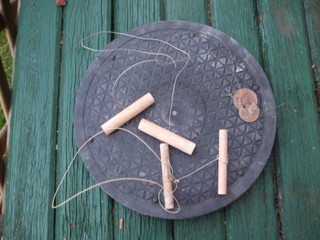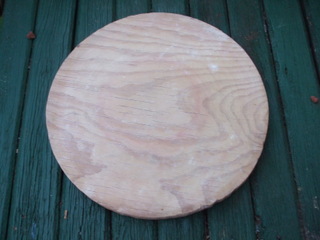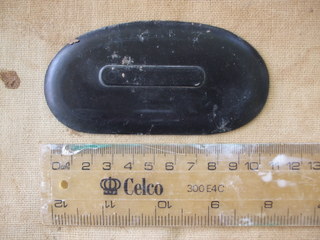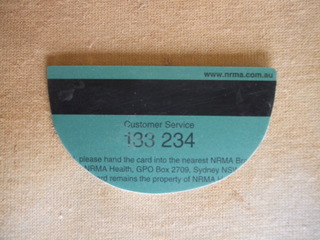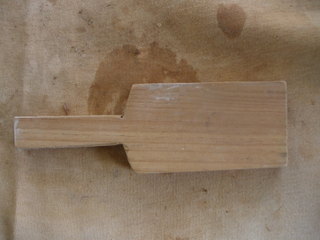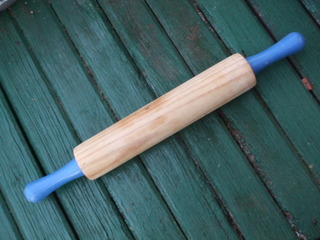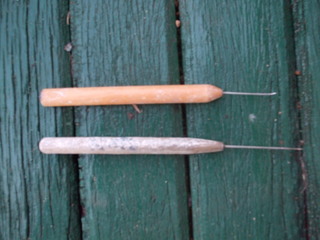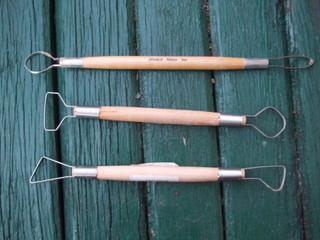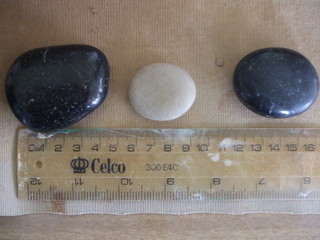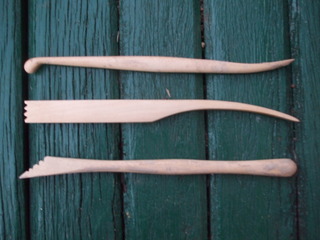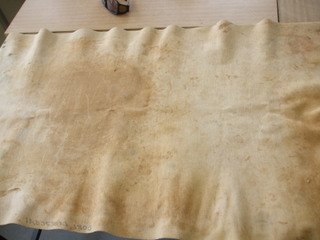Once you have won your clay and gotten it ready for use, it is time for the fun stuff. I have just recently become involved with pottery classes, something that I have promised myself I was going to do for many years and now I can give you some of the benefits (!) of that experience.
When I think of pottery I think of “throwing” clay pots on a wheel, as I am sure many people do but just because you don’t have a potter’s wheel stuck away in the back room or under the house somewhere doesn’t mean you can’t make attractive and functional clay objects. Having said that, there are a few simple tools that will extend the range of things you can make and most of them can be either obtained cheaply, manufactured at home or both.
Lazy Susan
Also called a “turntable” this is composed of two disks mounted one atop the other with a bearing in between that allows the top surface to rotate while the bottom surface doesn’t. It is very handy to have because you can form a pot on it by pinching or coiling and get access to all sides easily without having to pick the pot up. They are available cheaply in the “Two Dollar Shop” type of establishment, mine is 30cm across and I think this would be as small as you would want to go, this being one of those times then size makes a difference and bigger is better. If you can, check that it is free running before you buy it.
It would be possible to make one from scratch using some timber, a disk of masonite and a few marbles, also Carbatec Tools sell a bearing that would work pretty well and then you could just mount it on the timber yourself.
Circular Bat
This is a disk of plywood or particleboard that sits on the turntable and in turn the pot under construction sits on it, it prevents any protrusions from the turntable being transferred onto the pot and absorbs some moisture from the clay which can be useful if the clay is a bit soft.
Kidney
This can be either soft or hard kidney shaped piece or metal, plastic or rubber usually about 10cm long by around 5cm wide that can be used to smooth the outside or inside of hand built pots. You can buy them from a pottery supply place but it is easier to make your own by cutting a softer one from an (empty!) ice cream container or the harder one from a disused credit type card. There must be millions of these cards around like the gift card ones that are useless once the credit has been spent, so now you have a use for them!
Bat
This is just a lump of timber and a dressed-all-round (DAR) pine off cut sawn to shape would do the trick, there would be no point buying a readymade one. They are used to pat the outside of pots with while you are forming them to smooth the surface and make it denser.
Rolling pin
This could be a spare baking type rolling pin bought second hand from a Salvation Army shop (the Sallies) or just a piece of thick dowel or you could even manufacture one from scratch yourself on a wood lathe. The rolling pin is used to roll out slabs of clay to an even thickness so that they can be cut to size for slab pots.
Roller guides
These are used with the above rolling pin to roll out slabs of clay for making slab pots. This thickness of the roller guides determines the thickness of the slabs, one is put on each side of the clay to be rolled and then the rolling pin run over the clay until it is down to the thickness of the guides. The clay is then ready for cutting into slabs for maying slab pottery.
They can be made by cutting strips from plywood, particleboard, MDF or straight timber and if you make a variety of thicknesses you will be able to make a selection of clay slab thicknesses to suit your needs
Potters needle
This is a needle mounted on a piece of dowel to make holding easier and is used to draw lines on pots or punch holes. You can make one by pushing a needle eye end first into a wine cork. They can be used to draw a design onto a pot prior to carving.
Potters knife
This has a number of uses from marking pots to cutting clay slabs out for making slab pots, cutting around the top of pinched or coiled pots to make them even, lots of uses. I use an old kitchen knife from the sallies but you can use a Stanley knife or if you want something a bit more rustic, a hack saw blade ground back on an angle and mounted between two pieces of wood to form a handle works really well.
Cutting wire
When cutting large lumps of clay, for example cutting enough to make a pot away from the parent body, a knife would get all clagged up and be useless, so a wire is used in the same manner as cutting cheese. It is east to make, by tying each end of a piece of thin, flexible wire or fishing line around two short (25-50mm long) lengths of dowel, or even a couple of key rings.
Ribbon or Loop Tool
There are a loop of steel set into a wooden handle used for carving designs into clay or removing clay to refine pots and make them smoother or to remove clay from the inside of hand formed shapes. They are available in a variety of shapes, sometimes in sets in the el cheapo type shops but a very serviceable loop tool can be made by setting the open end of a bobby pin into the end of a piece of dowel, which is especially good for fine carving.
Burnishing Tool
Also called a rock or stone – well you can use a smooth, water worn pebble picked up somewhere to rub on the outside of your pot to smooth and compact the surface.
Modelling tools
Great for a wide range of jobs from smoothing difficult to get to areas, removing clay form areas where it is not wanted, carving and shaping. They can be carved from scrap timber.
Mat
While not exactly a tool, a fabric backed vinyl mat is a great surface to work on without getting clay all over your dining room table, lounge room floor or bed spread (OK, I’m kidding about that last one!). It should be at least 1000mm x 500mm and you use it fabric side up because it won’t stick to the clay that way.



